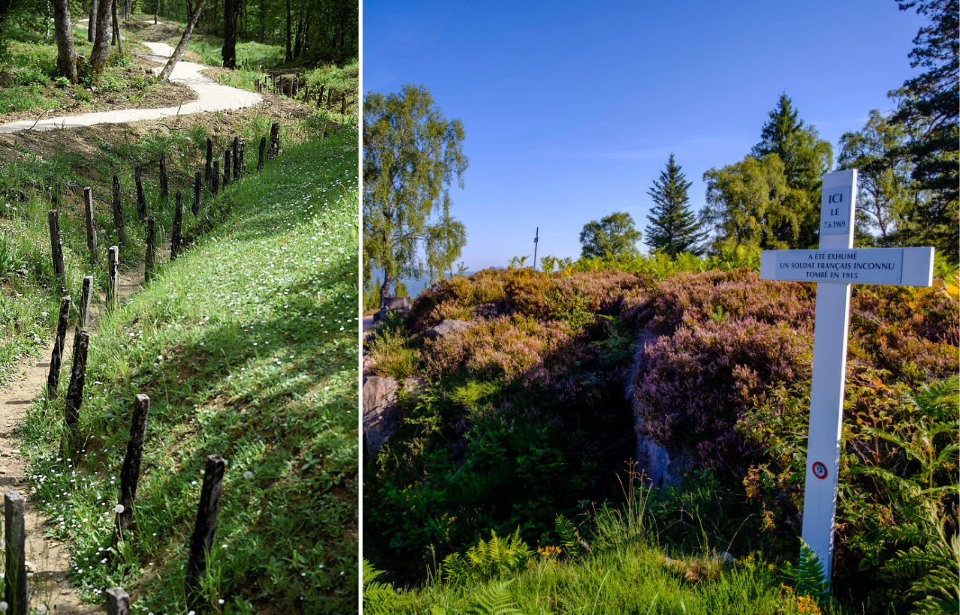World War I forever changed the European landscape, in terms of the loss of human life and the scars left behind in the earth via the digging of trenches and the explosive nature of artillery and other munitions. Some of these physical remnants are no longer visible, having been reclaimed by Mother Nature. Others, however, have been preserved, ensuring what took place over a century ago can never be forgotten.
The following are 24 photos that show the remnants of WWI-era trenches and the work that’s gone in to preserving them.
Thiepval Wood, France
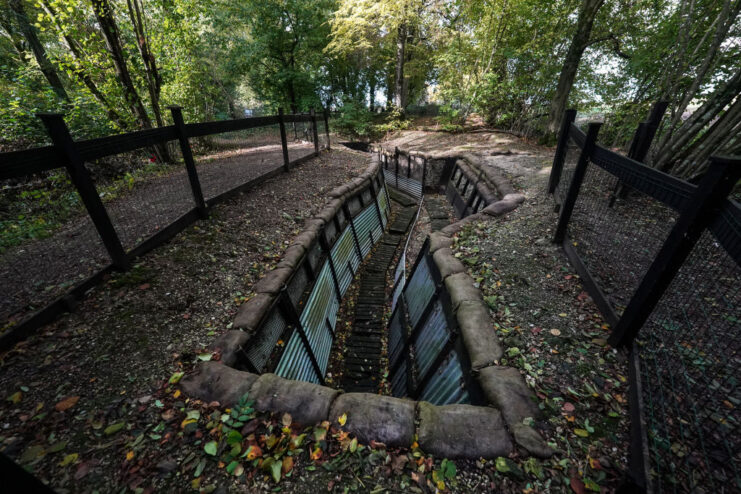
Thiepval Wood was one of the many battlefields to see action during the Battle of the Somme. While it might appear unassuming today, it was where the 36th (Ulster) Division launched an attack on the Germans at the Schwaben Redoubt on July 1, 1916. They were initially able to capture the site, but were later forced out by a strong counterattack.
Pictured above is a restored trench at Thiepval Wood.
Site of World War I’s bloodiest confrontation
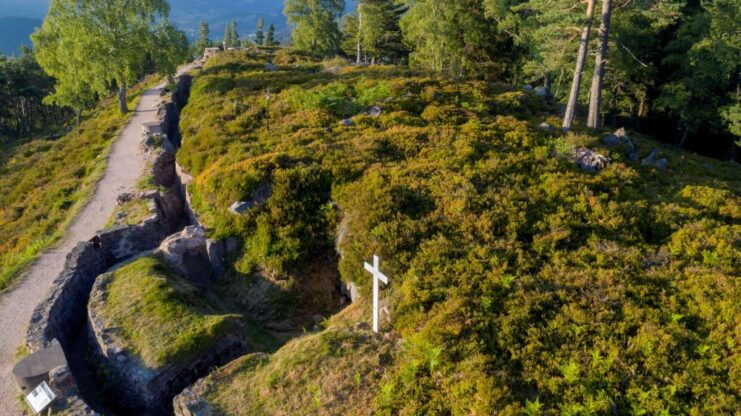
Site of the bloody Battle of the Linge (also known as the Battle of Linen), the Collet du Linge is a pass in the Vosges, in western France. The site has since been turned into the Mémorial du Linge, where visitors can visit the Lingekopf trenches and witness firsthand the conditions in which soldiers fought during the July 1915 engagement.
Unearthing trenches in Belgium
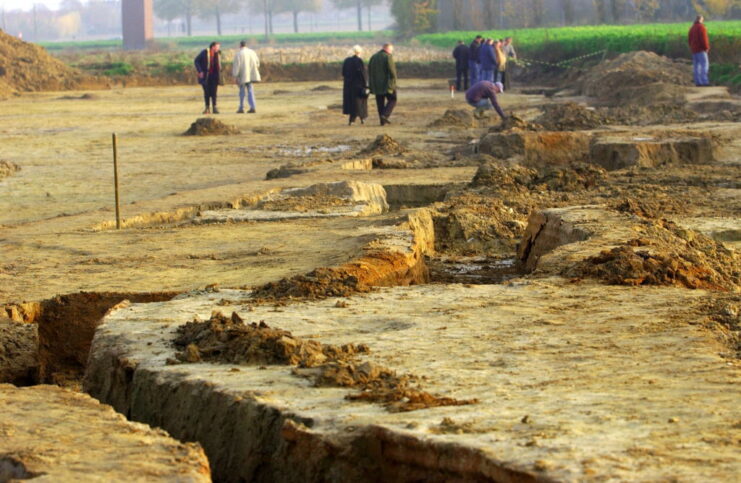
This image, captured in 2003, is of a World War I-era trench that had, at the time, just been excavated near Ypres, Belgium. The team involved in the excavation featured British military experts and Belgian archaeologists, who also unearthed the remains of British soldiers who’d sadly lost their lives during the conflict.
Le Main de Massiges
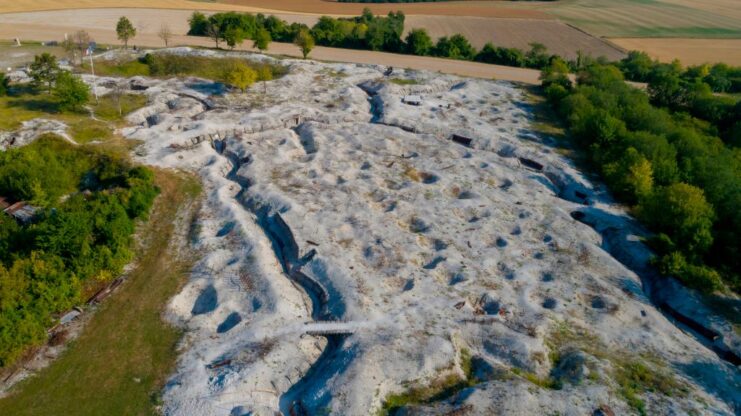
The 10-acre Main de Massiges, in the Marne, saw much action during the First World War. As with other areas of the Western Front, troops became entrenched in the region – but there was one difference. Whereas the majority of trenches were dug into soil, those at this particular site were dug into white limestone and chalk.
The above image shows the scale of this trench system.
Vimy Memorial Park, France
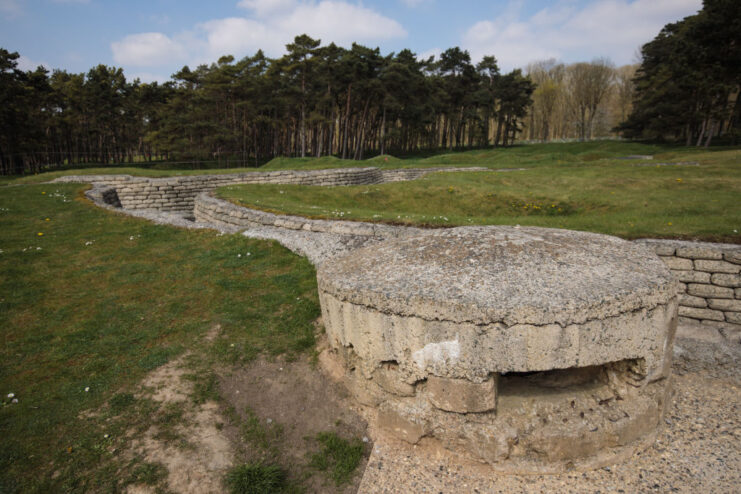
Vimy Memorial Park is one of the better known World War I-era sites, given how famed the Battle of Vimy Ridge has become. The engagement is best known for the four Canadian divisions that took part and, as such, has become a source of pride for many who revisit it.
The above image shows a pillbox positioned at the end of a trench line at the site.
Beaumont-Hamel Newfoundland Memorial
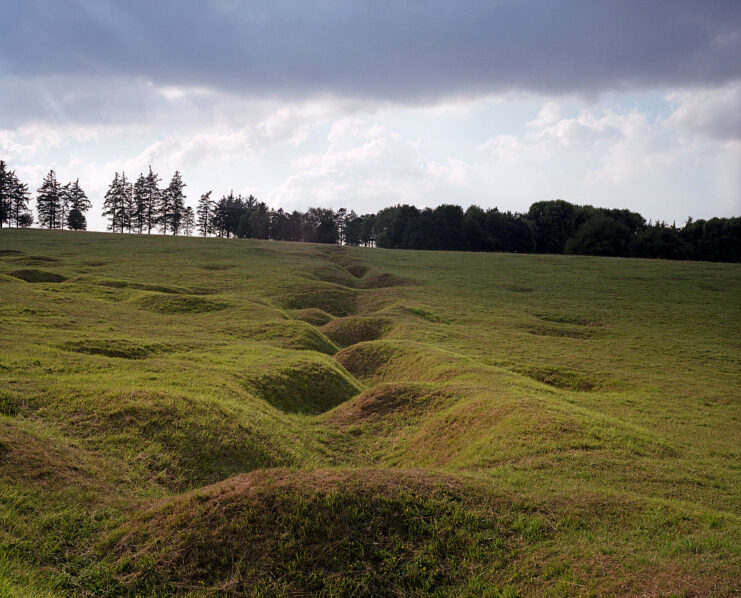
Not all trenches remain uncovered, as shown by this one at the Beaumont-Hamel Newfoundland Memorial. The site, like many, is dedicated to those of non-French heritage who fought during the First World War. In this cause, it was men from the Dominion of Newfoundland, who launched an unsuccessful attack on the Germans on July 1, 1916, during the Battle of the Somme.
Practicing before deployment
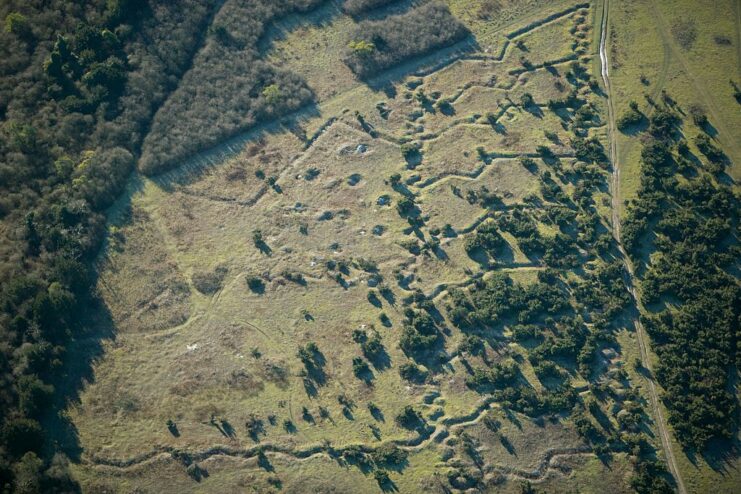
Before being deployed to France, British troops were subjected to rigorous training that would, hopefully, prepare them enough for the intense fighting they’d experience on the Western Front. Part of this training involved practice trenches, like the ones at Beacon Hill, near Salisbury.
Battle of Mačkov Kamen
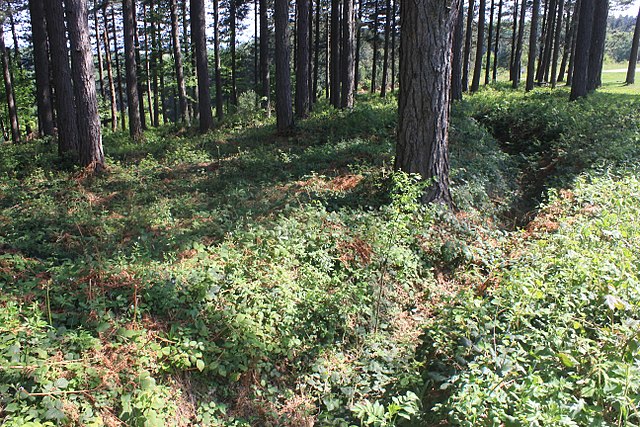
A little-discussed engagement of the First World War was the Battle of Mačkov Kamen, which took place in late-September 1914, toward the beginning of the conflict. While difficult to see beneath the greenery of the surrounding forest, this image shows what appears to be the remains of a trench.
Verdun, France
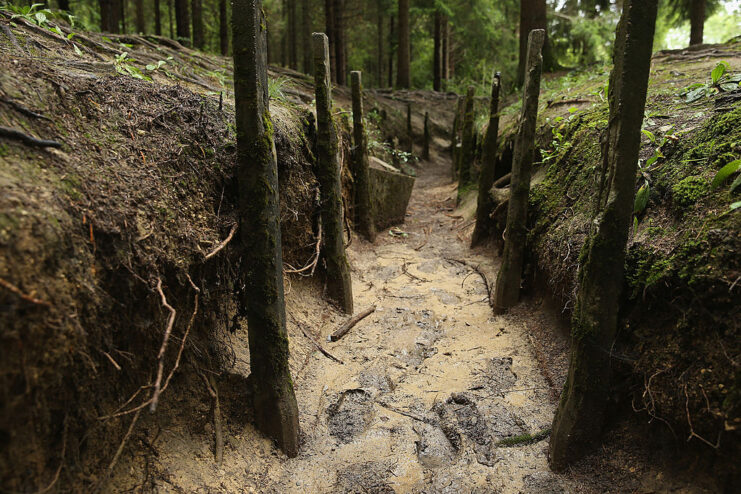
The Battle of Verdun was the longest engagement of the First World War – and, arguably, one of the harshest. Occurring from February 21-December 18, 1916, it saw both sides suffer hundreds of thousands of casualties, the majority of them deaths. The primary mode of movement during this time was trench systems, the remnants of which still scar the earth.
Dodengang
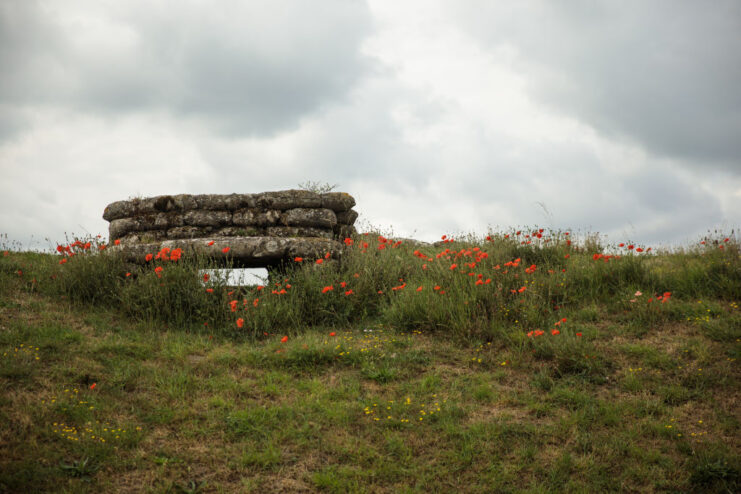
As the name suggests, the Trench of Death – known as the Dodengang – bore witness to much carnage over the course of World War I. Located along the banks of the Yser Canal, near Diksmuide, the 270-meter-long preserved section of history has become a somber tourist attraction for those looking to remember and commemorate the lives of those lost within its depths.
Poppies tend to grow at the site, providing beauty in an otherwise dark place.
Battle of Verdun
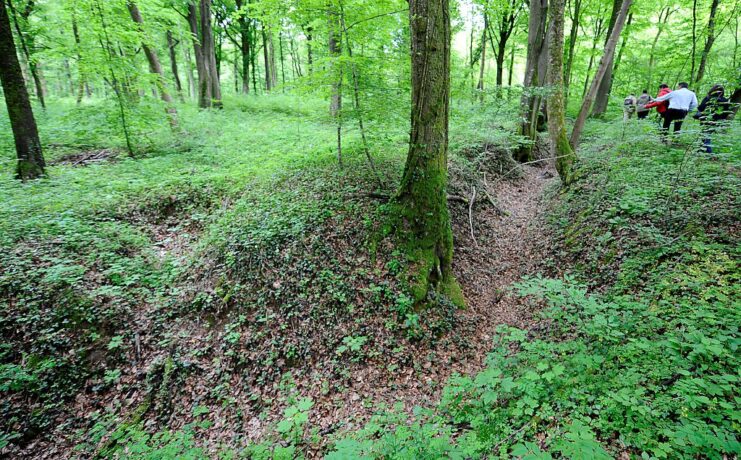
Not every trench that saw foot traffic during the Battle of the Verdun is still visible. Some have slowly been reclaimed by nature, as seen in the above image. The indent in the earth is still there, but foliage and plant life have begun to cover it.
Dreamy Hollow Campsite
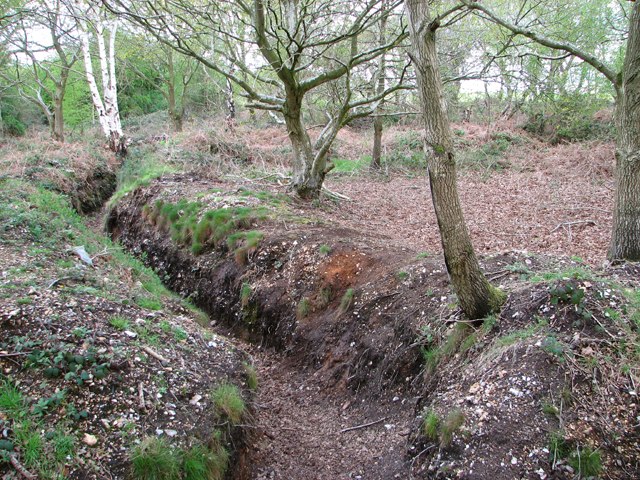
Another set of practice trenches located in the United Kingdom, the stretch at Dreamy Hollow Campsite are unique in that, as the name suggests, visitors can camp near a lasting piece of history. In 1915, 15 acres of trench line was dug at Docking Common, and, today, just 3.5 acres remain.
Sanctuary Wood
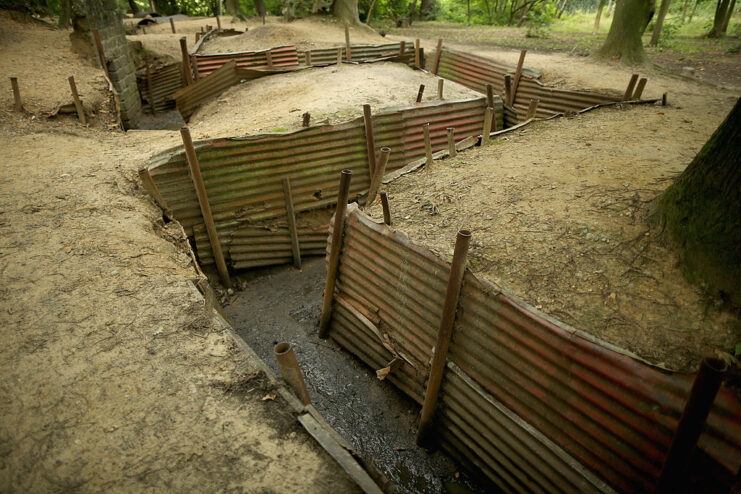
Sanctuary Wood, near Ypres, Belgium, is one of the most popular World War I-era sites in Europe. Featuring lines of preserved trenches, artillery craters and other reminders of the conflict, the location has a somber air to it, making most people bow their heads in respect of those who gave their lives in battle.
Mémorial du Linge
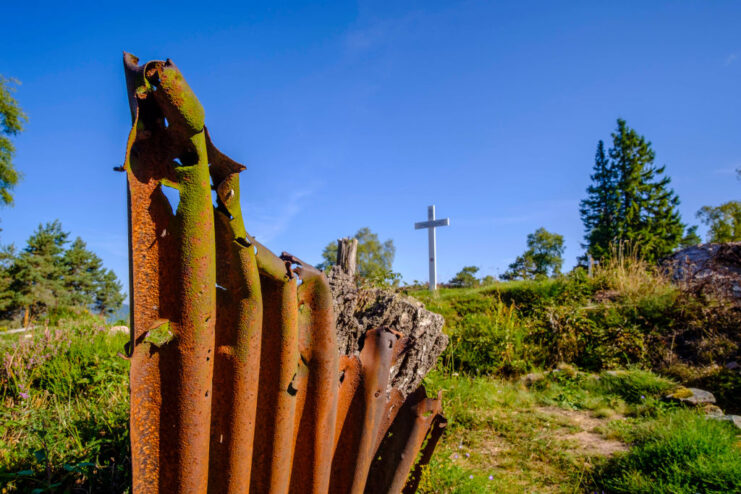
This is another photo captured at the Mémorial du Linge, showing not only the World War I-era trenches, but some of the sheet metal used to reinforce the winding passageways in the earth. It’s become incredibly rusted in the over-100 years since the battle took place.
Fighting along the Isonzo Front
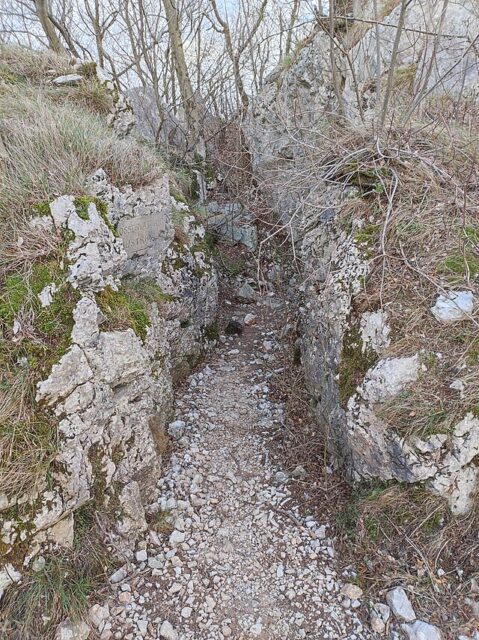
While the fighting along the Western Front typically garners the most attention when it comes to discussions of World War I, the Isonzo Front, in Italy and Slovenia, also bore witness to some brutal engagements. The stretch played host to the 12 Battles of the Isonzo, in which the Italians, Germans and Austro-Hungarian armies suffered hundreds of thousands of deaths.
This particular image shows a trench cut into the earth at Mount Sabotin, in Italy. The site has since been turned into Peace Park, which commemorates what took place along the ridge.
Craters and trenches at Sanctuary Wood
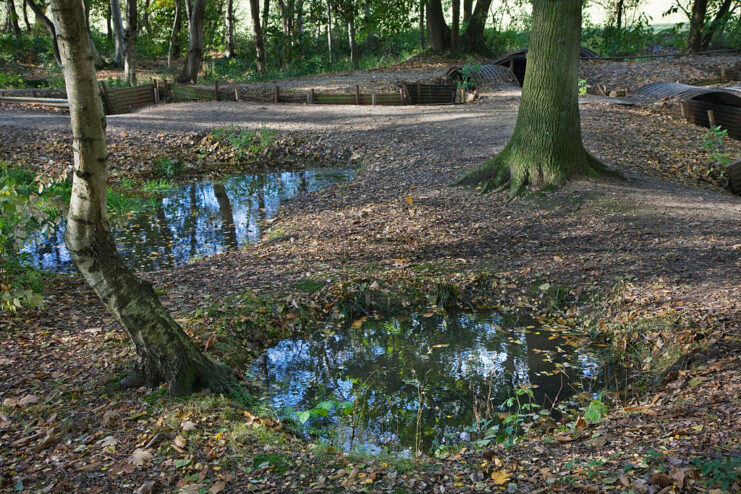
As aforementioned, artillery holes mark the site of Sanctuary Wood. They’re oftentimes filled with rain water, which only serves to emphasize just how large they are, providing an insight at just how terrifying it must have been to come face-to-face with the munitions on the battlefield.
Communications trench at Verdun
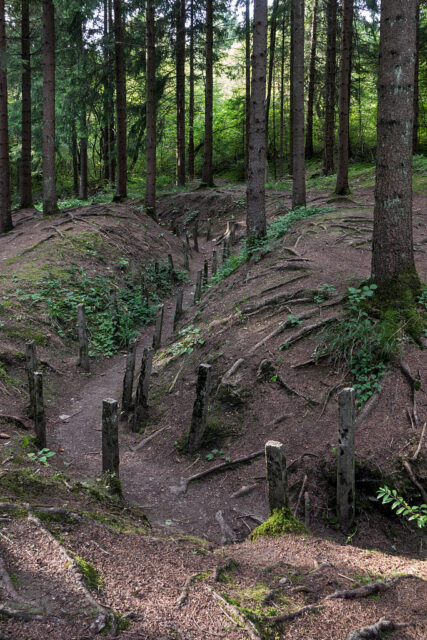
This communications trench is located near Douaumont, France, and is among the many remnants of the Battle of Verdun. Fort Douaumont, the nearby defensive fortification, was captured by the Germans just three days into the engagement, and they kept control over the site until October 1916.
Many trenches have been preserved to keep history alive
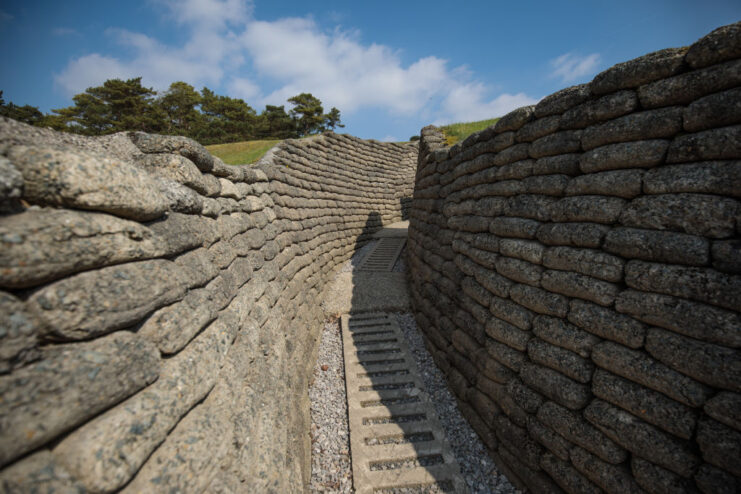
This photo, taken at Vimy Memorial Park, shows just how narrow, deep and long many of the trenches dug during the First World War were. They needed to be dug deep enough into the ground, to ensure protection from enemy fire, but not too deep as to prevent soldiers from aiming their weapons over the top. The amount of thought and effort that went into creating these trenches is truly astounding.
Remains of a German trench
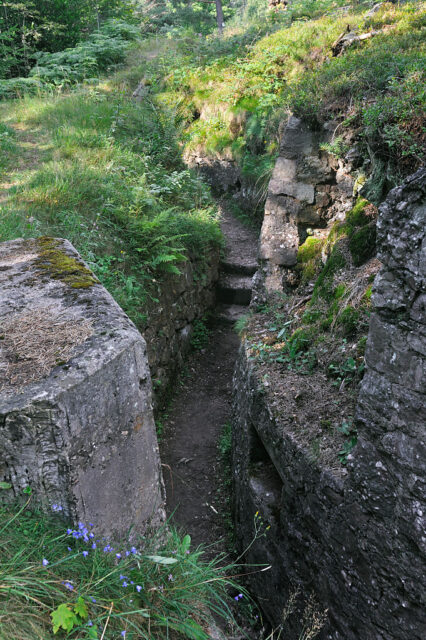
Located at the site of the Battle of the Linge, the above images shows the remnants of a German trench, which is slowly being reclaimed by Mother Nature. Note how narrow the stretch is and the materials used to ensure it wouldn’t cave in on the men serving within its confines.
Volunteers worked to preserve Le Main de Massiges
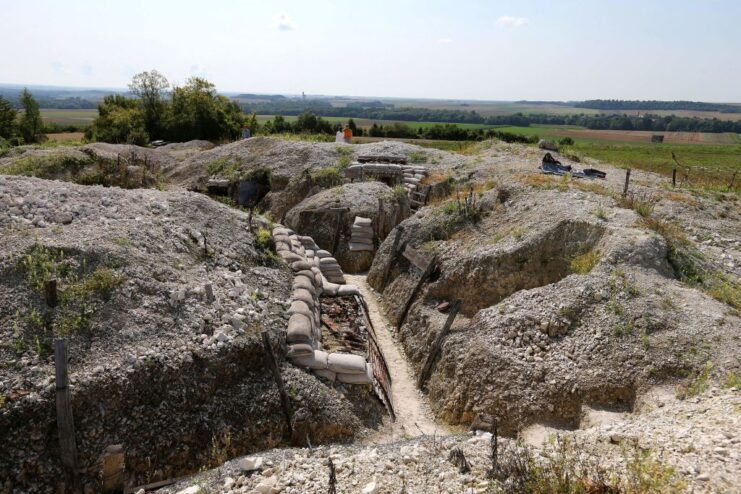
This image provides a closer look at the trench system that at Le Main de Massiges, which has been meticulously excavated and preserved by a group of volunteers since the late 2000s. The amount of effort and care they’ve taken while conducting their digs shows.
Somber feelings emerge
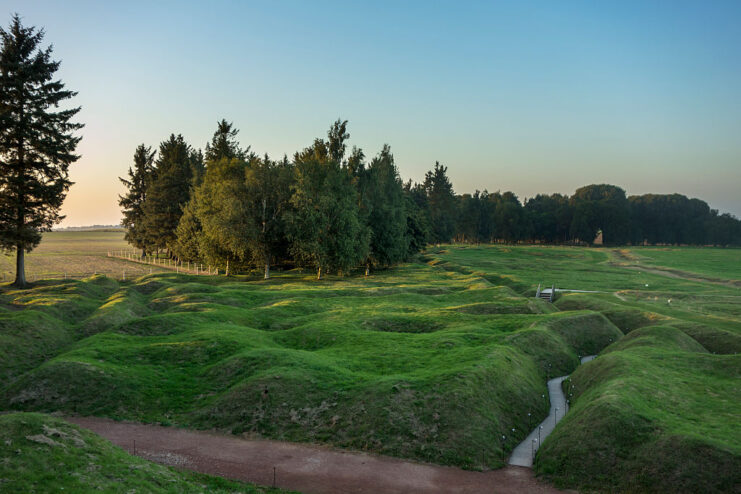
Another photo captured at the Beaumont-Hamel Newfoundland Memorial, this particular image shows just how many artillery craters have scarred the land and how close they came to the trenches.
It’s a harrowing and somber view; we can only imagine the fear the soldiers fighting in this region must have felt.
Monte San Michele
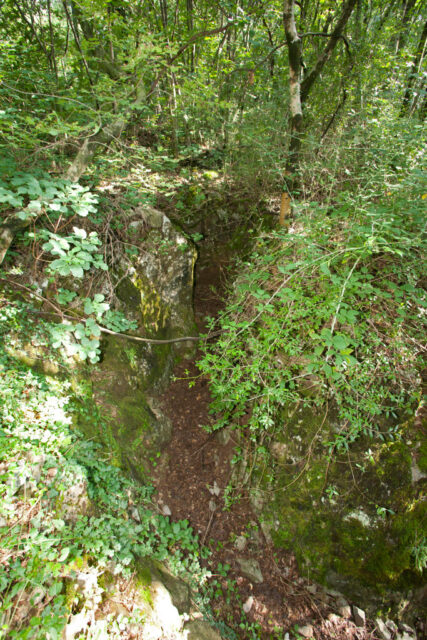
Monte San Michele, a hill on the Karst Plateau, bore witness to six bloody engagements during the Battles of the Isonzo. This was due to its prime location, which overlooked both the lower Isonzo Valley and the Plain of Gorizia. A few years after World War I, the area was named a “monumental area” and transformed into an open-air museum, meaning any remnants, such as the trench pictured above, were left undisturbed.
Many towns were destroyed by the fighting
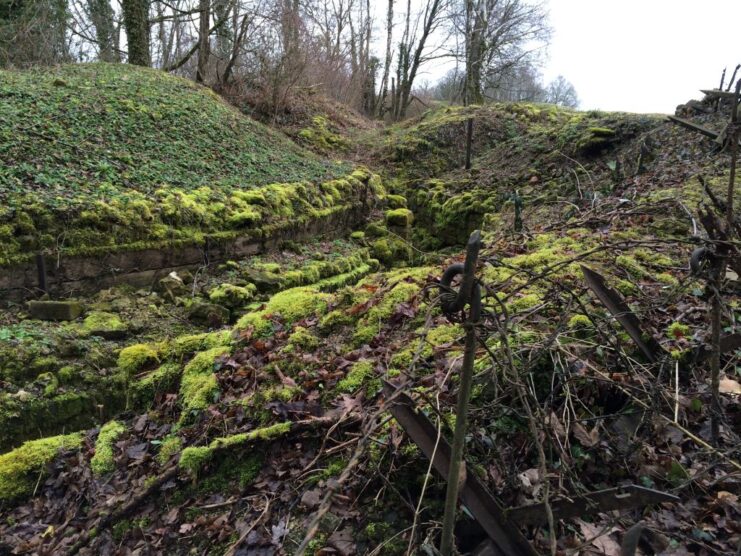
Given the brutality of the fighting that took place during the Great War, it’s unsurprising that innumerable villages and towns were destroyed. One such community was Vauquois, France, which suffered from continued mine attacks that left it in ruins.
It’s estimated that, between 1915-17, some 519 mines were fired at the commune by the German and French forces.
Le Plateau de Californie
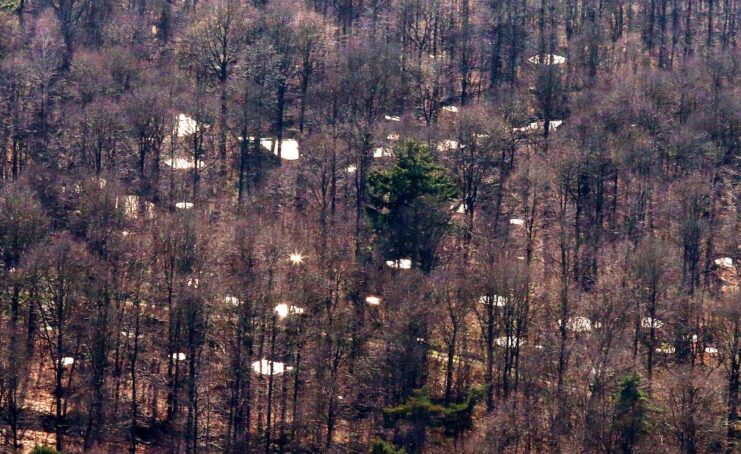
More from us: 20 Photos That Show the Remnants of World War I Scattered Across Europe
Le Plateau de Californie, near the Chemin des Dames, was part of Germany’s defensive locations during World War I. As such, it was lined with trenches and underground tunnels, all of which frequently came under attack by the Allies. This explains why the landscape is marked by artillery craters.
